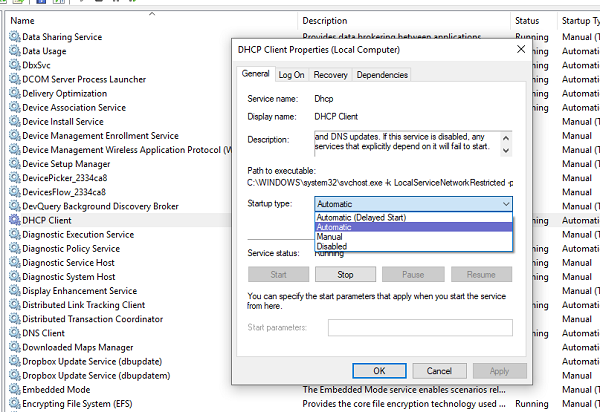
- HOW TO CONFIGURE A DHCP CLIENT WINDOWS 10 HOW TO
- HOW TO CONFIGURE A DHCP CLIENT WINDOWS 10 INSTALL
Enter the administrator credentials and click on the “Commit” button. The server must be authorized for the DHCP service to start: This setting is necessary to avoid the appearance of extraneous DHCP servers on the network. Authorization of a DHCP server in Active Directory (if it is joined to a domain). DHCP Users - members of the group can view server settings and a list of connected devices.Ģ. DHCP Administrators - group members have full rights to manage the DHCP server. Create a “Security Group” to manage this DHCP server. The initial setup process takes place in two stages:ġ. We follow the link "Complete DHCP configuration": After the installation is complete, you can begin the initial configuration of DHCP. We check the installed components and click "Install":. The wizard reminds you to plan your subnets, areas, and exceptions:. Since the components were added at the “Server Roles” step, we skip the “Features” step: We agree to add the components required for the DHCP service to work properly. Windows Server 2019 Tutorials:In this video, we will see the steps to install and configure the DHCP server role in Windows Server 2019.
Next, you need to find and select the DHCP role in the list. Specify the server on which we will install the DHCP role:. Heres the Docker container repo: docker-dhcpd. Create a network using the macvlan driver. Choose the first item "Role-based or feature-based installation": Create a VLAN interface on the Docker host and give it an address in the subnet. Launch Server Manager and select “Add roles and features”. 
The DHCP server controls the issuance of IP addresses, prevents duplication and frees unused addresses.īelow we’ll look at how to install and configure a DHCP server on Windows Server 2016 for a single subnet.Ĭloud Servers Intel Xeon Gold 6254 3.1 GHz CPU, SLA 99,9%, 100 Mbps channel from 4 EUR/month Try Installation process


DHCP is a dynamic host configuration protocol that allows automating the configuration of client network parameters, such as IP address, gateway, DNS, subnet mask.







 0 kommentar(er)
0 kommentar(er)
